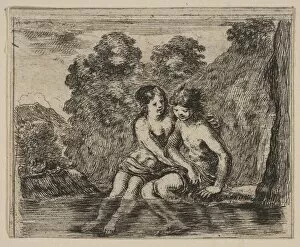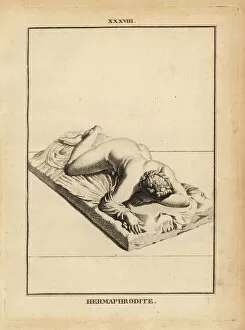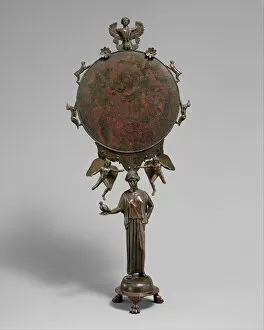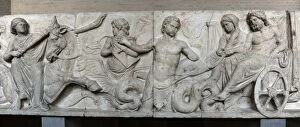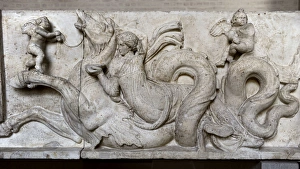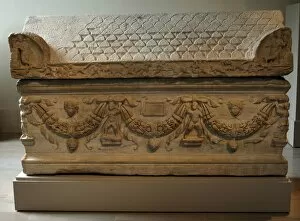Erotes Collection
"Erotes: The Divine Symbol of Love and Desire" In the enchanting world of art, the Erotes captivate our imagination with their timeless depiction of love, desire
All Professionally Made to Order for Quick Shipping
"Erotes: The Divine Symbol of Love and Desire" In the enchanting world of art, the Erotes captivate our imagination with their timeless depiction of love, desire, and union. From Cupid Blindfolded by Venus to the Statue of Hermaphroditus, these masterpieces evoke a sense of passion that transcends time. The oil on canvas painting portrays Cupid blindfolded by his mother Venus, symbolizing how love can often be blind and unpredictable. Meanwhile, the statue of Hermaphroditus represents the Greek god's power over unions, androgyny, marriage, and sexuality as he lies gracefully on a bed. A marble sarcophagus adorned with flying erotes holding a clipeus portrait transports us back to ancient times when these winged beings were believed to protect souls in their journey beyond life. Another marble sarcophagus embellished with garlands further showcases their significance in Roman art. Delicate gold ear pendants featuring Erotes remind us that love is not only an emotion but also an adornment for those who cherish it. A bronze mirror shaped like a draped woman exemplifies how even everyday objects were infused with representations of desire during ancient times. Mosaic artwork from Utique depicts playful cupids frolicking alongside dolphins and sealife—a testament to the omnipresence of love in nature itself. Salmacis and Hermaphrodite from Jeu de la Mythologie tells a tale steeped in mythology about two lovers forever intertwined. The Altar of Domitius Ahenobarbus captures Poseidon's wedding to Amphi—an event celebrated through intricate details carved into stone. This altar serves as a reminder that love knows no bounds—reaching even into realms ruled by gods. As we marvel at these artistic wonders spanning centuries, let us remember that they can more than mere symbols; they embody the eternal essence of human connection, passion, and the pursuit of love.


